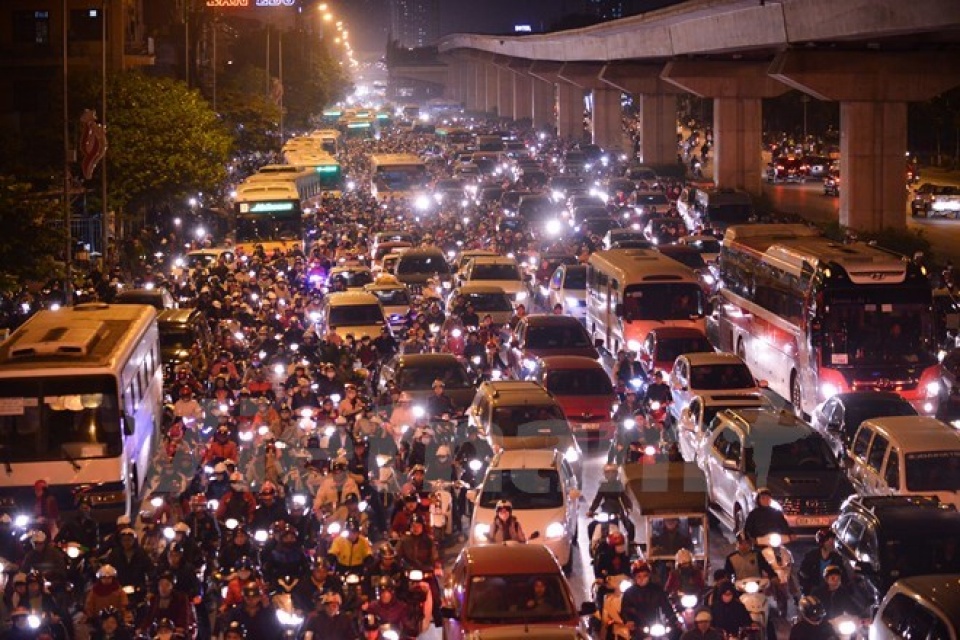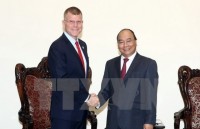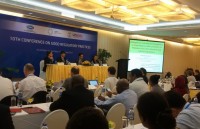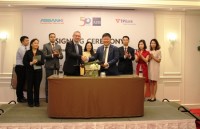
ADB supports development of green, resilient urban infrastructure in Vietnam
Latest
| TIN LIÊN QUAN | |
| 30 provinces and cities integrating into smart cities | |
| APEC moves to boost sustainable urbanisation amid globalisation | |
“Urbanisation has had a positive impact on Vietnam’s growth. But many cities, even as they continue to be the center of economic activities, lack key urban infrastructure services and remain vulnerable to climate change, particularly flooding,” said Satoshi Ishii, a Principal Urban Development Specialist at ADB.
“We look forward to working with Provincial People’s Committees of Thua Thien Hue, Vinh Phuc, and Ha Giang - administrative authorities of the capital cities of Hue, Vinh Yen and Ha Giang - to make sure that their provincial capitals are green and climate-resilient, while enhancing their economic competitiveness.”
 |
| The expansion of urban infrastructure has failed to keep up with the rapid increase of vehicles each year. |
More than 30 million people live in urban centers in Vietnam, but the impact of urbanisation is uneven across the country. Unlike the capital Ha Noi and other highly developed urban centers, secondary cities - with populations between 50,000 to 300,000 - such as Hue in central Vietnam and Vinh Yen and Ha Giang in the northern part of the country are lagging behind. For instance, less than 60 percent of households in secondary cities have access to clean water and only 10 percent of wastewater is treated properly.
The Secondary Green Cities Development Project will help make these urban centers become more livable, environmentally friendly, and climate-resilient. For Vinh Yen, the project will construct a new wastewater treatment system, upgrade 66.1 kilometers (km) of drainage control, dredge the Dam Vac lake, and develop 44.5 hectares (ha) of new public green space.
In Hue, the project will upgrade 21.9 km of drainage pipelines, rehabilitate 15.9 km of road surface and drainage, and develop 17.2 ha of green spaces, among others.
In Ha Giang, the project will upgrade about 7 km of urban drainage, protect 5.6 km of river embankments, and enhance the road urban network through a 6.2 km road and a 150-meter bridge to divert increasing traffic.
Apart from the loans, ADB will also administer a total of 14.1 million USD in technical assistance - with the Ministry of Natural Resources and Environment - and 6 million USD in grant investment from the Global Environment Facility and the Urban Climate Change Resilience Trust Fund. The technical assistance will mainstream a green and resilient city development approach across government agencies through policy advice and capacity building, and replicate the approach in other cities in Vietnam.
ADB, based in Manila, is dedicated to reducing poverty in Asia and the Pacific through inclusive economic growth, environmentally sustainable growth, and regional integration. Established in 1966, ADB is celebrating 50 years of development partnership in the region. It is owned by 67 members - 48 from the region. In 2016, ADB assistance totaled 31.7 billion USD, including 14 billion USD in co-financing.
 | Prime Minister Nguyen Xuan Phuc hails ADB’s assistance Vietnam always sees the Asian Development Bank (ADB) one of the leading sponsors with important contributions to the country's socio-economic development, Prime Minister Nguyen Xuan ... |
 | APEC economies target good regulatory practices The APEC Sub-Committee on Standards and Conformance convened its tenth Conference on Good Regulatory Practices (GRP) in Ho Chi Minh City on August 19-20. |
 | ADB supports SMEs in VN The Asian Development Bank (ADB)'s Trade Finance Program (TFP) is aimed at assisting Viet Nam and its businesses to expand trading opportunities, increasing competitiveness and promoting equitable ... |
























